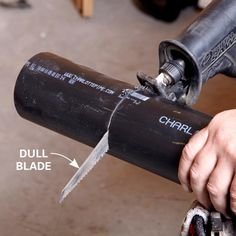
Tips to replace and repair plumbing under the house, in a house especially of an older age, you face many repair plumbing problems. This may include from electric to brickwork or wooden to plumbing. The problems in conventional houses are more common and also unbearable. These consist of: dripping faucets, leaky pipes, running toilets, low water pressure, leaking hose bib, slow or clogged drains, sump pump failure and many more.
Galvanized Steel Pipes
Older homes were plumbed with galvanized steel pipes which do rust over time. When these pipes rust, it is like having clogged arteries. You may notice reduced pressure and rust colored water when valves are first opened. Galvanized water system is normally replaced with PVC or any other latest technology to avoid leaks.
Cast Iron Drains
On the drainage side of the home system, cast iron drains were used for the drain pipes. Often these pipes may look fine, but cast iron drains frequently get rusted from the inside and develop leakage. Upgrading the drainage system can be costly but being unavoidable must be done as soon as possible to prevent further deterioration. It still a lot of installation time and labor. Even though if the plumbing is under the house. In most cases you don’t have to tear up the floor.
Break Concrete
Break concrete slabs to repair or replace sanitary piping has been an accepted practice in the construction industry for as long as there’s been indoor piping. Repairing or replacing under slab sanitary pipes. Break concrete and removing dirt begins by accurately locating the pipe and the leaks. Remove carpeting or other flooring. for later re-installation. After the repairs are completed, a hydro test should be performed before covering the work and patching the slab.
Repair Plumbing Under The House
Repair plumbing under the house a traditional dirt-floor crawlspace with no slab has several disadvantages. The root cause of these disadvantages is moisture in the unconditioned air. In the summer, warm moist air comes in contact with the cool conditioned floor above it and condenses, which can cause mold, wood rot, and attract pests. In the winter, unconditioned air steals heat from the living area, driving up energy bills. Repair plumbing under the house in an enclosed crawlspaces. They are containing by a solid concrete or masonry foundation wall. That extends down to footings just below the frost line.
Concrete Slab
Porous materials such as wood and insulation can absorb a lot of water. A concrete slab will function as a membrane. A membrane under the concrete slab coupled with a layer of gravel or stone to break capillary action will prevent water from rising to the slab. But sometime the concrete slab will need to have extra drainage added on all sides. Around the house or dwelling space and all along the sidewalks. Such as French drains around the low spots and run out to to the street or curb.
Plumbing Repair Location
There is no single approach to the repairs it really depends on a number of factors, including the cause of the leak, the plumbing repair location and the extent of the damage. In some cases. Repairs are inexpensive. Done fast. Now the pipe could be by-pass to avoid ripping up the slab and large scale excavation. Depending on the plumbing repair location. However, other cases may be expensive, especially if there is widespread damage or if the plumbing is difficult to access.
Tips To Replace And Repair Plumbing Under The House Trenchless Pipe Repair
There are modern alternatives and the latest solutions that can be innovative and effectively replace or repair the pipes and other faulty items under your slab without having to excavate through the floor or digging from outside of your property. It’s also much less money to do the tips to replace and repair plumbing under the house trenchless pipe repair than by digging for pipe replacement.
Tips To Replace And Repair Plumbing Under The House For The DIY
Whereas tips to replace and repair plumbing under the house for the DIY on all issues. Therefore will require the services of a technician because of the types of pipes used, complex networks, unknown designs. Depending on the age of the home. The material may be of different material and manufacturing concerns. It is not easy to DIY or asking to an experienced plumbing service to find and resolve the issues. It definitely needs well-organized and experienced people to do the job right.
Therefore Plumber Oklahoma City, Ok Plumbing & Repair can help you with the solution to your all kind of issues. Because we have the experience and know how. To satisfy or customers.